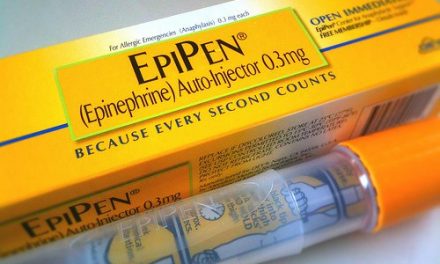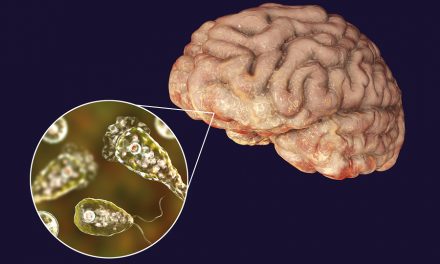Can you imagine this scene: it’s a cloudy morning in South Beach and you’re standing on a seawall at the edge of Biscayne Bay when all of a sudden you see a beautiful, gentle manatee nuzzles its face against a stormwater outfall pipe as a plume of dirty black water washes over it.
RELATED STORY:
Sadly, that actually happened and was filmed by a resident at West Avenue and Sixth Street in Miami. And it shows just how much of a problem exists; “during former Mayor Philip Levine’s tenure, the city installed stormwater pumps capable of sucking streets dry and preventing flooding. But critics — and scientists — say the pumps also deposit dirt, debris, oil runoff, dog excrement, and pesticides into Biscayne Bay.”1
Disgusting. How this is allowed to go on boggles the mind. How our officials allow this type of pollution to our waterways and animals is beyond me. As one resident put it, “…we cannot save the city to the detriment of the bay.”1
The dumping at West and Sixth prompted the Department of Environmental Resources Management to investigate the site and take samples that will be tested for bacteria. And Miami Beach spokeswoman Melissa Berthier said the city is being proactive about street sweeping and litter collection so that trash and debris isn’t in the stormwater system. (You can see the city’s full statement below.)
RELATED STORY:
But not everyone thinks that’s enough.
– Dave Doebler, a South Beach resident and environmental activist, who founded the Volunteer Cleanup organization, said he started getting involved after seeing trash being dumped into the bay through the stormwater system (years before the pumps were installed). However, while the pumps catch bulky trash, they can’t necessarily grab the smaller trash that ends up in the bay. And he’s also worried about the large dirt deposits disrupting the bay’s ecosystem, “Let’s just say — best-case scenario — it’s just dirt (coming from the pumps). That actually destroys the bay by basically blocking light from the seagrass on the floor of Biscayne Bay. It allows algae to then grow, further blocking sun from the seagrass, which is the habitat for the Biscayne Bay nursery. Manatees eat seagrass; small baby fish hide out in seagrass. There’s this tremendous ecosystem of life that is being destroyed because we are killing off the seagrass.”1
RELATED STORY:
– Rachel Silverstein, the Miami Waterkeeper executive director (they advocate for clean water) shares his concerns, “Stormwater runoff from around the county is one of the major sources of pollution in Biscayne Bay and was implicated in the recent county report released about the seagrass die-off.” 1
– Mike Alvarez, Miami Beach’s former infrastructure director and assistant public works director of 22 years, also dislikes the current stormwater setup because the city’s 20 pump stations don’t have injection wells, something that would help clean up the stormwater before it is pumped into the bay, “Every day, we’re pressure-washing sidewalks — that’s all dirty water. All the alleyways have a lot of grease from washing the containers, kitchen mats from the restaurants. Everything goes into the alleys, and everything goes into the stormwater system.” 1
The city continues to argue that they are doing the best they can.
RELATED STORY:
Currently, other coastal cities are looking to Miami Beach for how they can tackle rising sea levels. Alvarez is hoping the city could both find a way to combat sea levels while protecting the environment.
We couldn’t agree more.
Miami Beach spokeswoman Melissa Berthier provided the following statement to New Times:
“We have a number of best management practices to stop potential sources of pollution before they enter our stormwater system, such as a proactive environmental inspection program, regular street sweeping and litter collection, and fines for littering, among others. We also conduct regular cleaning of our stormwater system, cleaning our pump stations and their treatment structures weekly to monthly and the whole system once a year.
Despite our multitude of efforts, we occasionally see a cloud of suspended soils coming out at our outfalls, each caused by a different source and situation. When we see a cloud like the one we saw on Monday, we immediately respond to the site to turn off the pump station, if there is one connected to the outfall, and conduct a thorough investigation. Sometimes we are able to identify the source quickly and work with the violator to correct and enforce the issue. Sometimes it requires a more lengthy and in-depth investigation like the investigation currently underway at the 6th Street outfall.
6th Street outfall investigation:
A team of Operations, Engineering, and Environmental staff responded to the incident after the reports were received. Based on their investigation, the discharge appears to be fine soil that remains suspended in the water and is coming from upstream.
We have been diligently investigating the sporadic discharges from this outfall with our interdepartmental team. Our Operations staff has been using cameras to see inside the pipes and check for damage. Our Engineering staff has been reviewing the design to see if perhaps this part of the system has pockets where organic material sits and deteriorates, creating brown water. Our Environmental staff has been investigating potential illicit discharges and connections, such as dewatering from upstream construction sites, that could be contributing to sediment in the system. We also retained a lab to test for approximately 120 different parameters, including hydrocarbons, bacteria and other indicators of pollution that were not elevated.
We have not yet found the source of this cloud of suspended soil at this location so we are ramping up our investigations. This week Operations plugged the system, cleaned it, ran it dry, and is videoing it again. If there are any breaks in the aging pipes within the drainage basin connected to this outfall, the video will reveal the issue and their location so we can fix them.
Also, on Friday, Environmental staff is planning to spend multiple hours to do a very thorough inspection of the neighborhood that drains to this outfall to see if there are any construction activities or other sources of soil that could be draining muddy water into the pipes.
In the interim, we are continuing to monitor this outfall so we can modify our operations accordingly.
Let me also add that the manatee at the stormwater outfall does not indicate anything unusual. Manatees often seek the fresh water that comes from stormwater outfalls, and that’s what looks like is happening here.”
As a resident of Florida, as someone who loves our ecosystem, I’m not sure this is enough. What do you think?
SOURCE:




![Dr. Burzynski Trial [Update]](https://healthnutnews.com/wp-content/uploads/2016/05/imgres-1.jpg)






